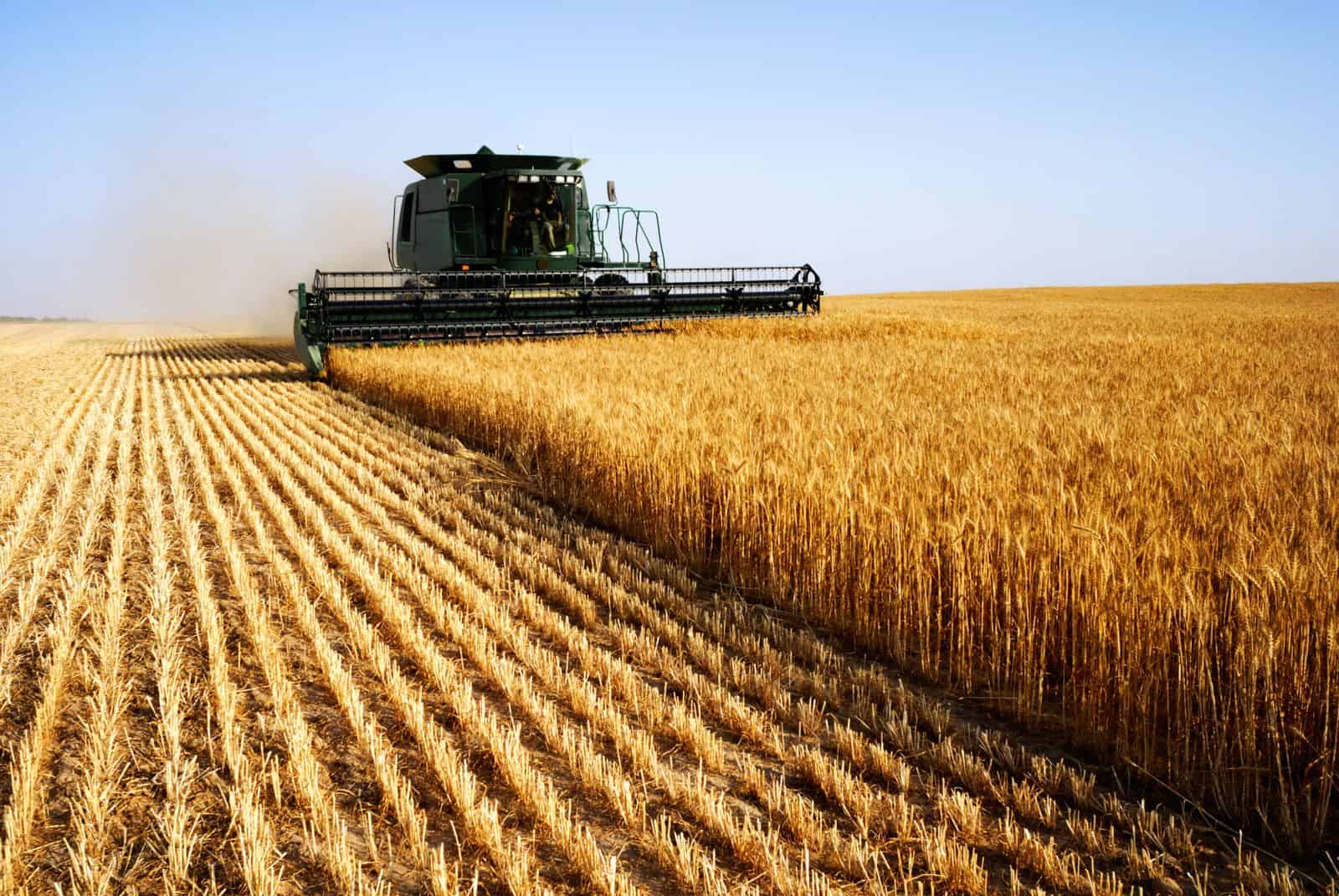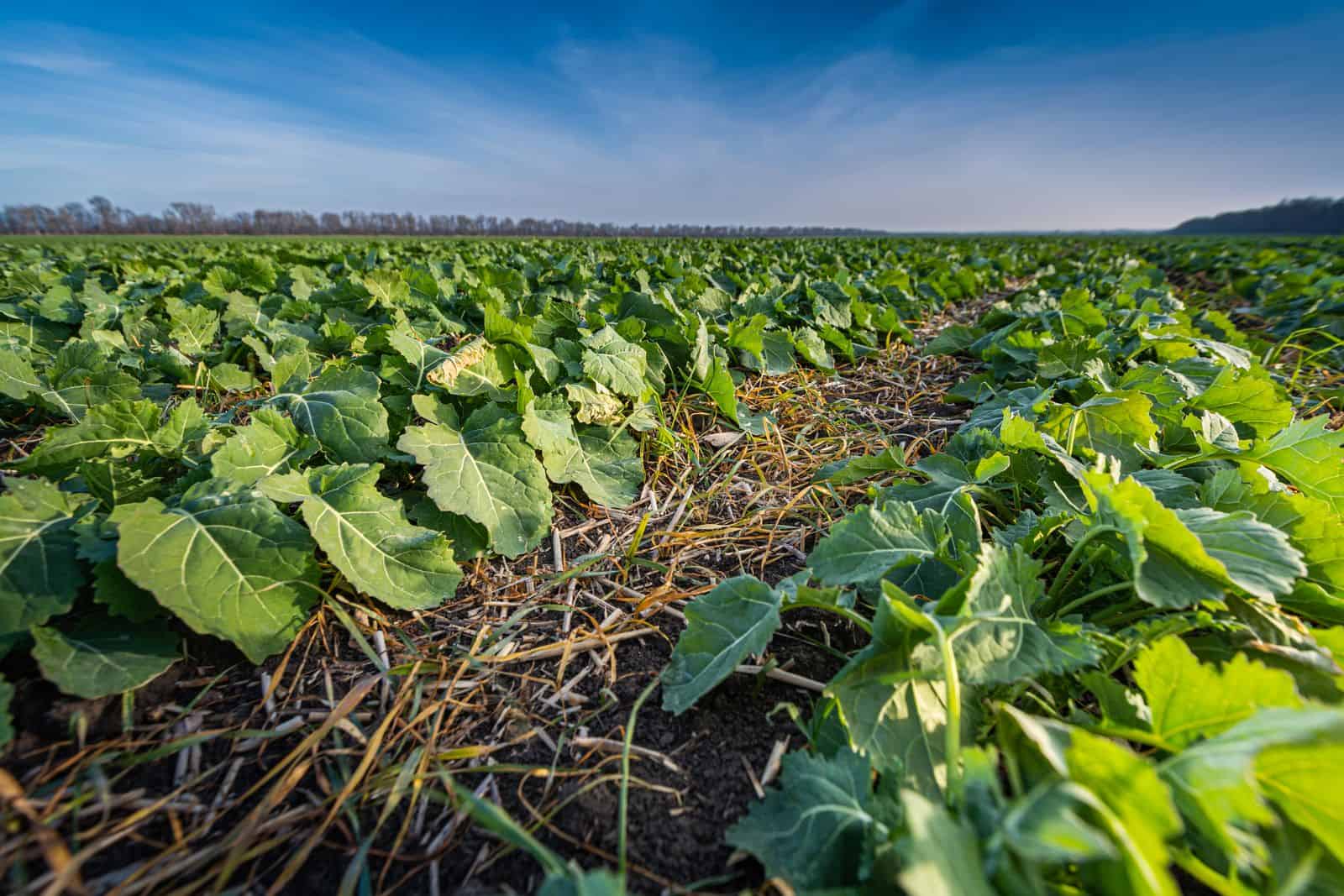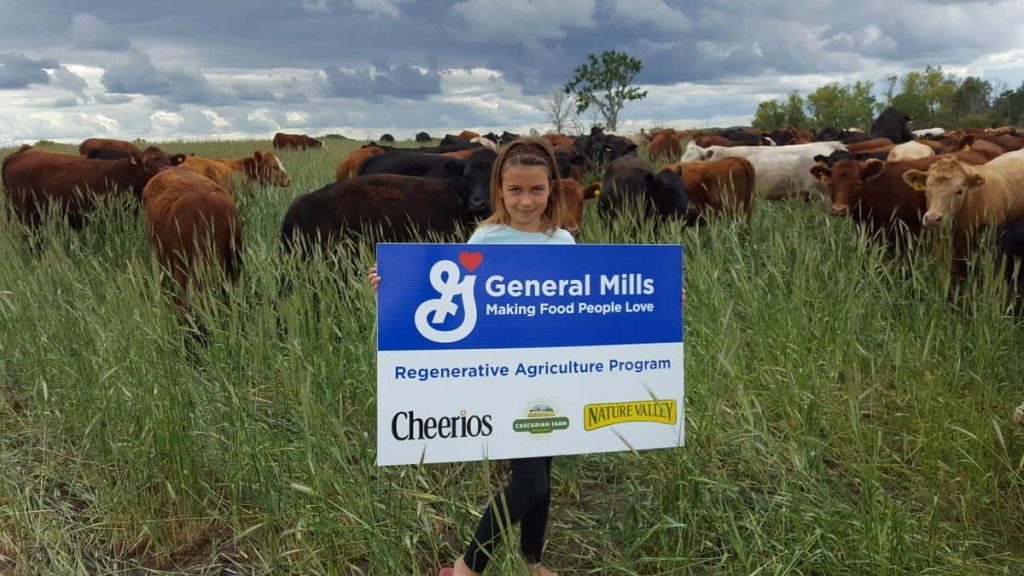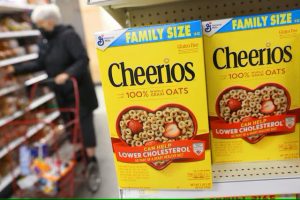
But General Mills says its use of the term is less about setting hard and fast rules and more about listening to the farmers who are familiar with their land.
The cereal and snacks giant — which in 2020 set a goal to reduce its greenhouse gas emissions 30% by 2030 — launched its annual sustainability report this week where it called regenerative agriculture the “most promising solution to reach our climate goals.” The term is defined by General Mills as a farming approach that captures atmospheric carbon in order to sequester it.
“We’re not looking for a checklist of things to do,” said Mary Jane Melendez, the company’s chief sustainability officer. “It’s not just about strengthening one key ingredient, but about looking at the farm as a living ecosystem and looking to maximize its potential.”
The company said regenerative agriculture is being driven by the outcomes it can produce. General Mills has been educated by the farmers it sources from, said Melendez, who has worked at the cereal maker for 17 years and took over its environmental operations in 2019.
The maker of Cheerios and Cinnamon Toast Crunch believes its sustainability strategy is paying off.
In 2022, it adopted an additional 120,700 acres of regenerative farmland, bringing its total to 235,000 acres, according to its annual sustainability report. General Mills also said 92% of its packaging is recyclable or reusable, and 87% of its operations use renewable energy sources.
The overall strategy for how farmers can adopt the practices differs based on the region and what techniques they are able to implement into their supply chain, said Jay Watson, the company’s senior leader of global impact initiatives.
“We think some of the beauty of regenerative agriculture, and regeneration more broadly, is that it is more of a process and a spectrum,” Watson said. “So it’s kind of hard to put into a box.”
The annual sustainability report adds that General Mills still needs to better integrate farmer and community outcomes “as our initial conceptualization of regenerative agriculture has overemphasized ecological outcomes.”
Some of the practices the company’s farmers enact include reducing tillage and fertilizer usage and adding cover crops, Watson said.

Spurring a biological interaction between crops
One project that falls under General Mills’ regenerative agriculture umbrella is “intercropping” in the Saskatchewan province of Canada. This involves growing two or more crops in close proximity in order to spur a biological interaction, industry group Sustainable Agriculture Research and Education said.
The farmers are analyzing several plants that grow in the same field and seeing how the crops perform differently compared to a large single-crop field, according to Watson.
“It’s context-specific because certain things that work in southern Minnesota are not going to work in California and northeast Saskatchewan, but they are all connected by advancing the principles,” he said.
Some companies enacting regenerative agriculture programs focus on getting certified by a third-party organization. Melendez said General Mills isn’t interested in this because it doesn’t want to pigeonhole its approach that involves different crops and farming operations.

How food companies can avoid ‘greenwashing’
While many companies claim to be adopting regenerative agriculture practices, some analysts fear the lack of a clear definition results in greenwashing. A recent report from agriculture group the Food and Land Use Coalition (FOLU) said this causes confusion, misrepresentations and skepticism for consumers about what sustainable farming practices are able to achieve.
In a statement to Food Dive, the FOLU report’s author, Theodora Ewer, said in order to mitigate greenwashing, food companies should set their climate targets based on their ability to achieve positive results.
“Food companies should align around an outcomes-based framework and standardized set of metrics to assess how regenerative agriculture practices can lead to positive outcomes in different contexts,” Ewer said.
According to General Mills, a key factor in its approach is being able to quantify how the biodiversity in its soil — including the variety of bacteria and fungi — has improved.
A University of Washington study published in 2022 found farms that increased the biodiversity of their soil and added cover crops over five years produced more nutritious food.
“If we want to talk about regenerative agriculture, we have to measure regeneration. Can we demonstrate that these approaches are context-based and improving the outcomes of regenerating? We feel that’s very important,” Watson said.
Melendez said General Mills has learned from the farmers it sources from on what the most effective approach for their supply chains is, as many of them have already been utilizing the methods for years. That way, she said, the company has been able to translate approaches down to a local context.
“We’ve taken those learnings and those insights from the farmers who have been doing this far longer than we have to craft a definition that is open, inviting, and allows for context-based approaches,” she said.
Cameron Hodgins, who runs a family-owned livestock farm in Canada, began working with General Mills in 2019. Last year, its regenerative program invested $2.3 million to advance its sustainable farming efforts in the country. General Mills said his operations are part of the oat supply the company sources from. Hodgins told Food Dive he was moving toward implementing regenerative practices prior to linking with the company.
The most beneficial part of the program, Hodgins added, is the farmer network that the company has helped to connect him with.
“It’s really opened the door to get to know people from different commodity groups and create some pretty close relationships,” Hodgins said.
“We think some of the beauty of regenerative agriculture and regeneration more broadly is that it is more of a process and a spectrum. So it’s kind of hard to put into a box.”
Jay Watson
Senior leader of global impact initiatives, General Mills
Watson and Melendez said General Mills prioritizes bringing farmers together as a key part of its regenerative agriculture pilot programs because of the added value of hearing from others dealing with the same crops. One way it did this was by creating a private Facebook group for the farmers to utilize.
“It was a safe space for them to connect and share challenges, because this isn’t always an easy transition for farmers, especially when you’re used to having very clean farms where the rows are straight,” Melendez said.
Hodgins said the broader regenerative agriculture project could provide a long-term economic benefit for farmers if implemented properly, starting on smaller operations.
“We see a lot of dollars coming out of very small enterprises that are taking up less than an acre,” Hodgins said. “So if we could replicate that on different farms where you might open it up for different generations to be involved, that’s where I see a lot of opportunity.”
The sustainability of food products also is proving to be lucrative as consumers increasingly value it when they shop. More than 40% of respondents in a survey by consulting group Kearney stated they always or nearly always consider the environmental impact of their food purchases.
The company believes that through regenerative practices, farmers stand to gain financially. Watson said some of its farmers have been able to decrease their expenses by abandoning synthetic fertilizers.
“Instead, they’re able to harness the power of nature to help drive some of these ecosystem services in harmony with nature,” Watson said.
Correction:A previous version of this story misstated that General Mills set its regenerative agriculture goal in 2019. The company set its goal in 2020. The previous version also misstated the year Cameron Hodgins began working with General Mills which was in 2019, not 2022.























